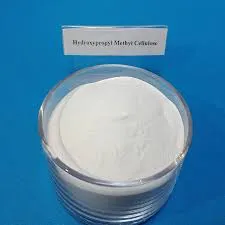
Дек . 09, 2024 17:42 Back to list
Optimizing Tile Adhesive Performance with HPMC Enhancements and Applications
HPMC for Tile Adhesive An Essential Polymer for Modern Construction
Hydroxypropyl Methylcellulose (HPMC) is a widely used polymer in the construction industry, particularly in tile adhesive formulations. This versatile compound has become essential due to its unique properties that enhance the performance and durability of tile adhesives. An understanding of HPMC and its role in tile adhesives can provide insights into its benefits, applications, and formulation techniques.
What is HPMC?
HPMC is a semi-synthetic polymer derived from cellulose, a natural polymer found in plant cell walls. It is modified to enhance its solubility in water and improve its binding properties. This modification results in a white, odorless powder that is non-toxic and easily dispersible in cold water. Its chemical structure allows it to form a viscous solution, providing various functionalities in construction applications.
Role of HPMC in Tile Adhesive
1. Improved Workability One of the primary advantages of using HPMC in tile adhesives is its ability to improve workability. HPMC increases the viscosity of the adhesive mixture, making it easier for installers to apply and spread the adhesive. This property allows for better control during the installation process, ensuring that tiles can be positioned accurately without sliding or shifting.
2. Water Retention HPMC has excellent water retention properties, which is crucial in tile adhesive formulations. Adequate water retention prevents the adhesive from drying too quickly, allowing for better adhesion between tiles and substrates. This characteristic is particularly important when working in hot or dry conditions, where rapid drying could compromise bond strength.
3. Open Time Extension The inclusion of HPMC in tile adhesives extends the open time, providing installers with more flexibility during application. This extended open time allows for adjustments and corrections before the adhesive sets, helping ensure that tiles are aligned properly and securely bonded to the substrate.
hpmc for tile adhesive

4. Enhanced Adhesion HPMC enhances the adhesive properties of tile adhesives, promoting better bonding between different materials, such as ceramic, porcelain, and natural stone tiles. This improved adhesion is critical in ensuring the longevity and durability of tile installations, reducing the risk of tile pop-offs or delamination over time.
5. Anti-Sag Properties When installing larger tiles or tiles on vertical surfaces, sagging can be a concern. HPMC helps to control the rheological properties of the adhesive, ensuring that the mixture remains stable and does not slump. This quality makes HPMC an invaluable component in contemporary tile adhesive formulations.
Applications of HPMC in Tile Adhesive Formulations
Tile adhesives containing HPMC are used in various applications, ranging from residential to commercial projects. They are widely used for both wall and floor installations, suitable for various substrates, including concrete, cement board, and gypsum. Additionally, HPMC-modified tile adhesives can be used in demanding environments, such as bathrooms and kitchens, where moisture resistance is essential.
Conclusion
In summary, Hydroxypropyl Methylcellulose (HPMC) plays a vital role in modern tile adhesive formulations. Its multifunctional properties—such as improved workability, water retention, open time extension, enhanced adhesion, and anti-sag behavior—make it an indispensable component for both professional installers and DIY enthusiasts. As the construction industry continues to evolve, the demand for high-performance tile adhesives will undoubtedly grow, and HPMC will remain at the forefront, driving innovations in tile installation technologies.
Utilizing HPMC in tile adhesive formulations not only enhances the functionality of the products but also contributes to the overall quality and durability of tile installations. Understanding its role helps manufacturers create better products and aids installers in achieving flawless results. As construction practices advance, the importance of HPMC in tile adhesives will continue to be recognized, ensuring its place as a critical ingredient in building materials.
-
The Widespread Application of Redispersible Powder in Construction and Building Materials
NewsMay.16,2025
-
The Widespread Application of Hpmc in the Detergent Industry
NewsMay.16,2025
-
The Main Applications of Hydroxyethyl Cellulose in Paints and Coatings
NewsMay.16,2025
-
Mortar Bonding Agent: the Key to Enhancing the Adhesion Between New and Old Mortar Layers and Between Mortar and Different Substrates
NewsMay.16,2025
-
HPMC: Application as a thickener and excipient
NewsMay.16,2025
-
Hec Cellulose Cellulose: Multi functional dispersants and high-efficiency thickeners
NewsMay.16,2025







